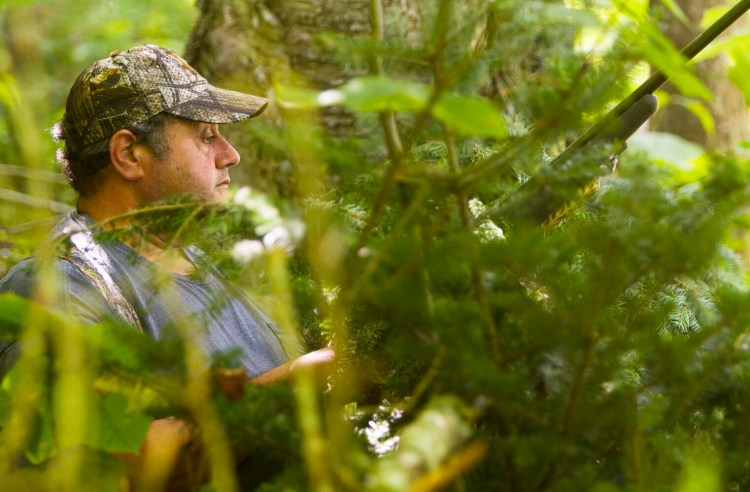Another hunting season is upon us and many folks will kick it off trying to bag a bruin. Those who pursue these ghosts of the forest will have several options over the next several months as to how they might go about it, each with its own appeal.
The first to begin is the bait season, which kicked off Aug. 26 and spans four weeks. Guides and DIYers have been tending their sites for a month, hoping bears become habituated to them. Hunting over bait offers several distinct advantages.
One is that you don’t have to cover much ground or expend as much energy. Most of that work comes up front. Once the sites are set and the season opens you merely need to slip in as unobtrusively as possible, then sit as quiet and still as is humanly possible, for hours on end. If all goes well you might be one of the roughly 25 percent of bait hunters who are successful.
Another advantage is that you are close, and the animals come to you. That allows hunters time to size up their quarry. If it’s a big bear you seek, you can wait for them to near some object you’ve set in place to judge size. It also gives you time to make sure the bear you see is not a sow with cubs. And you’ll have more time to make a well-placed shot.
Next comes the dog season, which runs from Sept. 9 until the opening of deer season. My accomplices call it “dog hunting” because that’s what they spend most of their time doing: hunting for their dogs. For these practitioners it is the chase, far more than its conclusion, that’s the attraction. There’s something primitive, exciting and rewarding about listening to the sound of hounds in hot pursuit.
Hunters must know the terrain and their dogs well in order to be successful. They know which dogs are best on a cold track, and when to throw in the more mouthy (louder) dogs. They recognize the sound when a bear has been treed or bayed.
Then it’s time for hunters to join the chase, trying to reach the dogs and the bear before the latter decides it has had enough and heads for the hills. While the object is to bag a bear, many houndsmen consider a treed bear reward enough.
The general season spans both of the former, and continues through the regular firearms season on deer. This offers an opportunity for those who may be pursuing other game to take a bear should one happen by, though it’s a very low percentage method. While deer densities are measured in deer per square mile, bears are measured in square miles per bear, with the home range of a single bear possibly covering 10 square miles or more. Furthermore, the dense woods of Maine make it nigh onto impossible to spy one of these shy and elusive creatures. Still, enough deer hunters have chance encounters to make it a possibility, so non-residents may want to be prepared with the proper permit in addition to their regular hunting license.
Lastly is the trapping season. This is a highly specialized technique with a few, dedicated practitioners. It’s still a low percentage enterprise but for obvious reasons, offers hunters the best opportunity to size up their quarry as they are only permitted to use traps that allow them to release bears alive and unharmed should they choose to do so.
All things considered, Maine may just be the best place to hunt bears, at least in the lower 48 states. Bear densities are high, relatively speaking. Combined hunting seasons span the better part of three months and guided hunts are affordable. If you’ve never tried it you might want to give it a shot this fall.
Bob Humphrey is a freelance writer and registered Maine guide who lives in Pownal. He can be reached at: bhunt@maine.rr.com
Send questions/comments to the editors.


